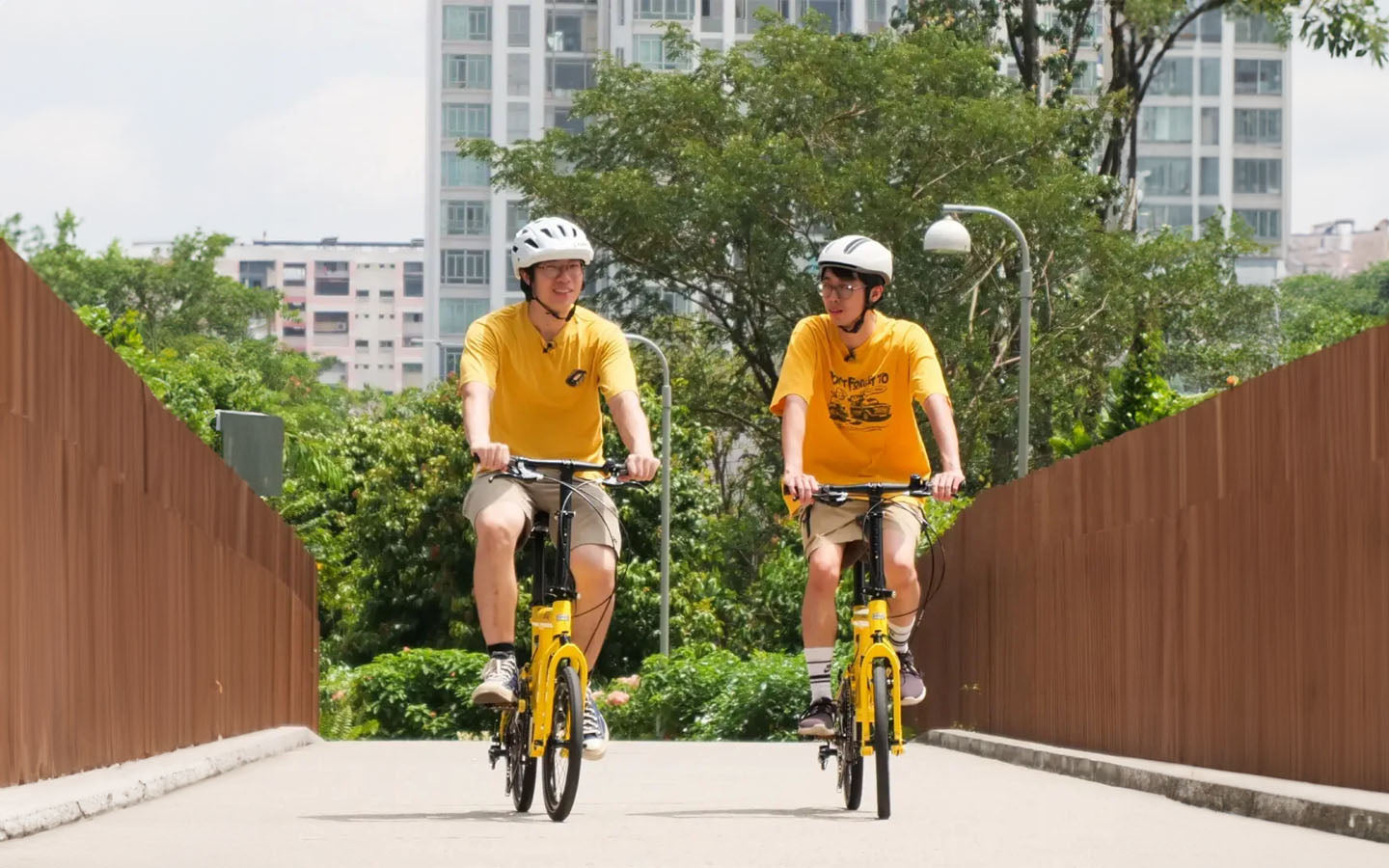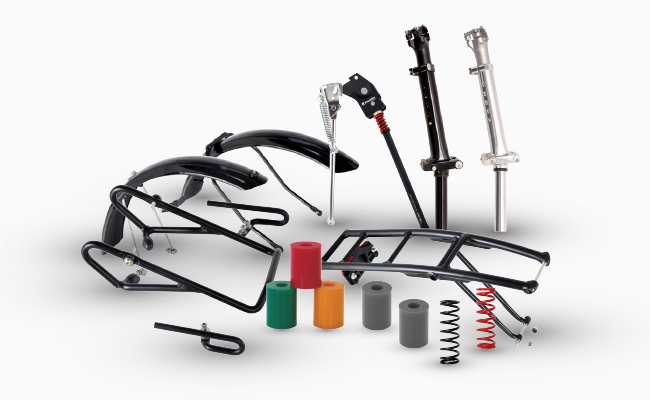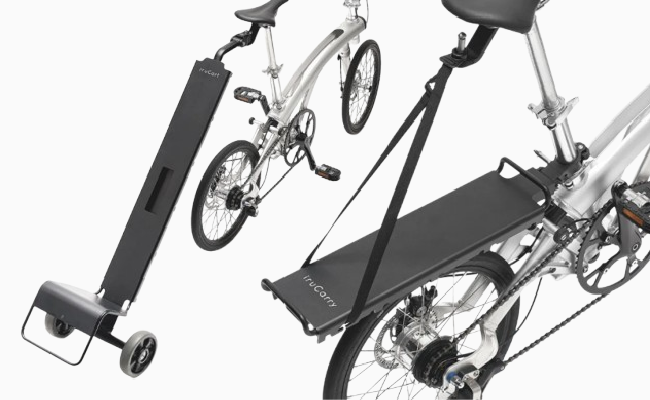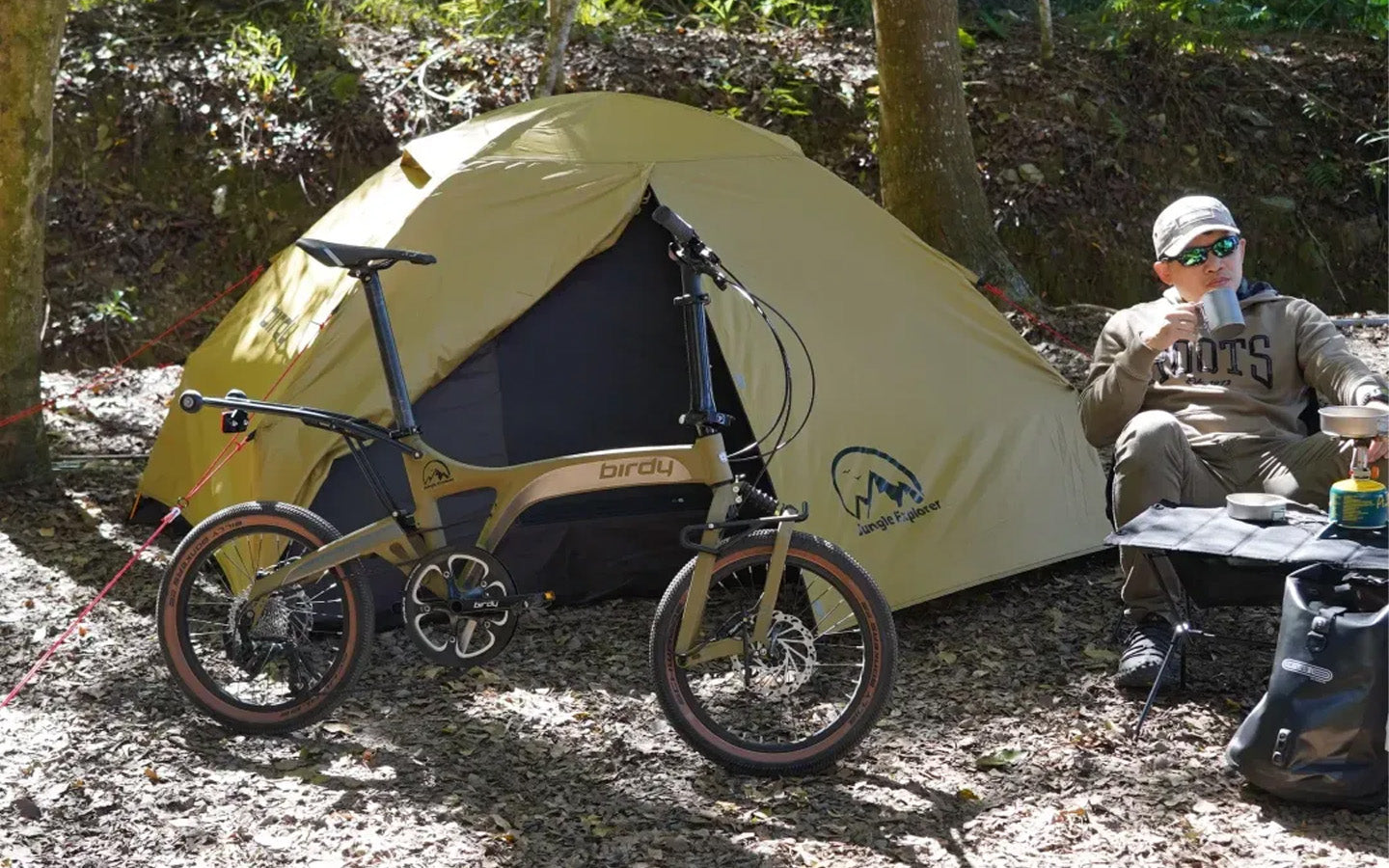
Cycling For Beginners: How to Get Started on Your Cycling Journey
Cycling is more than just a means of transportation. It’s a lifestyle, a passion, a community, and a life-long journey of discovery and adventure! People take it up for many different reasons: some use it to commute to work, others use it to explore the great outdoors, and some others simply want to get fitter. But no matter what group you fall into, starting your cycling adventure can be a daunting prospect.
Never fear: Mighty Velo is here to help you get pedalling! As Singapore’s premier folding bike specialist, we’re well-equipped to give you all the cycling tips and tricks you should know to make your experience as a beginner cyclist smooth sailing.
Without further ado, here’s how to get started on your cycling journey:
1. Choose the Right Bike
Types of Bikes
The first step in your cycling adventure is selecting the right bike for your needs. Here's a more detailed guide to help you decide what kind of bike to get first:
- Road Bikes: These bikes are designed for speed and efficiency on paved roads. They feature lightweight frames, thin tyres, and drop handlebars, making them perfect for long-distance riding and speedy cycling on smooth surfaces. If you're interested in participating in road races or long-distance cycling events, or simply want to feel the wind on your face, a road bike might be your best bet.
- Mountain Bikes: Built to handle rugged terrain, mountain bikes have thicker, knobby tyres for better traction on dirt trails and rough paths. They come with suspension systems (either partial or full suspension) to absorb shocks from uneven surfaces. Mountain bikes are ideal for exploring off-road trails.
- Commuter Bikes: If you plan on cycling to work every day, you’d probably like the most comfortable bike possible. Commuter bikes have you covered. They feature medium-width tyres, flat handlebars, and a more upright riding position. They’re versatile and comfortable, making them suitable for casual riding, commuting, and light trail use.
- Gravel Bikes: Gravel bikes have a mix of traits from road and mountain bikes. Most commonly, they have partial or full suspension systems, drop handlebars, and wide knobby tyres. They’re meant for cyclists who want to give their road bike a bit more grit for off-road cycling, or for adventurous cyclists who aren’t willing to sacrifice speed.
- Folding Bikes: These superbly portable bikes are designed for urban environments where space is a premium. They can be folded into a compact size for easy storage and transportation. Folding bikes are great for urban commuters who want to take their bike on public transport or store it in small apartments or offices.
Fit and Comfort
Ensuring the bike fits you well is crucial for a comfortable and enjoyable ride. Here are some tips for a proper fit:
- Saddle Height: When sitting on the saddle, your leg should be almost fully extended at the bottom of the pedal stroke, with a slight bend in the knee.
- Handlebar Position: The handlebars should be at a height that allows you to ride comfortably without straining your back or shoulders. You should be able to reach the brake and shifter levers easily.
- Reach: The distance from the saddle to the handlebars should allow you to maintain a slight bend in your elbows and a relaxed posture.
If you’re not sure how to adjust your bike to fit you, consider bringing it to your local bike shop. A proper fit will greatly improve cycling comfort, efficiency, and performance.
2. Essential Gear
Helmet
Safety should always be your top priority when cycling. A good-quality helmet can protect you in case of an accident. Look for a helmet that:
- Fits snugly: It should be secure but not too tight, and it should sit level on your head, covering your forehead.
- Meets safety standards: Ensure the helmet manufacturer has a recognized safety certification.
- Has proper ventilation: Good ventilation helps keep your head cool during long rides.
Accessories
Investing in some essential accessories can enhance your safety and convenience:
- Lights and Reflectors: Front and rear lights are crucial for visibility, especially if you plan on riding at night. Reflectors on your bike and clothing also help you be seen by others.
- Water Bottle: It’s important to keep hydrated on long rides! A Fidlock water bottle would be a great pick, as it can stay secured to your bike while also being easily accessible when you get thirsty.
- Locks: If you’re not riding a folding bike, then a sturdy lock is essential for securing your bike when you’re not riding it. A folding bike won’t run into this problem, of course – simply fold it up and roll it indoors with you!
- Repair Kit: A basic repair kit should include a spare tube, a mini-pump, and a multi-tool with Allen wrenches and screwdrivers. Knowing how to fix a flat tyre and make minor adjustments can save you from being stranded.
- Bags and Pouches: Waterproof bags and pouches can save your phone, wallet, and other belongings from getting drenched in the rain, or from going flying when you take a sharp turn. ORTLIEB bags are an excellent choice for this purpose.
3. Learn the Basics
Traffic Rules
Understanding and obeying traffic rules is essential for your safety and the safety of others:
- Signal Your Turns: Use hand signals to indicate your intentions to other road users.
- Stop at Red Lights and Stop Signs: Always obey traffic signals and signs. Stop at red lights and stop signs, just like you would in a car.
- Be Aware of Your Surroundings: Keep an eye out for cars, pedestrians, and other cyclists. Avoid wearing headphones that could block out important sounds.
Bike Maintenance
Keeping your bike in good working condition ensures a smooth and safe ride. Here are some basic maintenance activities you’ll need to be familiar with:
- Fixing a Flat Tyre: Learn how to remove a wheel, replace an inner tube, and inflate the tyre. Practice at home so you’re prepared when it happens on the road.
- Lubricating the Chain: A clean and well-lubricated chain reduces friction and wear. Apply bike-specific chain lube regularly, especially after riding in wet or dirty conditions.
- Checking Brakes and Gears: Regularly inspect your brakes and gears to ensure they’re working properly. Adjust or replace worn brake pads and keep your gears shifting smoothly.
Riding Skills
Developing essential riding skills will make your cycling experience more enjoyable and safer:
- Balancing and Steering: Practice riding in a straight line, making smooth turns, and avoiding obstacles.
- Using Gears: Learn to use your gears effectively to maintain a comfortable cadence and tackle hills more easily.
- Braking: Practice smooth and controlled braking, using both your front and rear brakes. Avoid sudden, hard braking, especially on wet or slippery surfaces.
4. Plan Your Routes
Parks and the Park Connector Network
For a beginner cyclist, exploring local parks – almost all of which are connected by the Park Connector Network – is a great way to enjoy cycling in a safe and scenic environment. The PCN is perfect for leisurely rides as you get used to cycling.
Commuting
If you plan to use your bike for commuting, take some time to find the safest and most efficient routes. Look for roads with lower traffic volumes and fewer intersections. Planning your route in advance can make your commute more enjoyable and less stressful. If you have a folding bike, commuting is made easier by the option of combining cycling with public transport.
Adventure Rides
For those looking for a bit more excitement, plan some longer rides or weekend adventures at Sentosa, Pulau Ubin, or other less frequented spots. Research routes that offer interesting scenery, challenging terrain, and opportunities to explore new areas. Bring a map or use a cycling app to stay on track, and always let someone know your planned route and expected return time.
5. Join the Community
Local Clubs
Joining a local cycling club can provide motivation, support, and camaraderie. Many clubs offer group rides, training sessions, and social events. Riding with others can help you improve your skills, discover new routes, and make new friends.
Events and Races
Participating in cycling events and races gives you goals to work towards and a sense of accomplishment. Many events cater to different skill levels, from fun rides to competitive races. Some require you to clock in a certain distance over a period of multiple days, while others are short-and-sweet sprints. Check out local event calendars or cycling websites to find events near you.
Online Communities
Engage with online cycling communities for tips, advice, and inspiration. Platforms like Mighty Velo’s own Facebook group are excellent resources for connecting with other cyclists, sharing your progress, and finding motivation.
6. Stay Motivated
Set Goals
Setting achievable cycling goals can help keep you motivated and focused. Your goals might include riding a certain distance each week, improving your average speed, or completing a challenging route. Celebrate your progress and milestones to stay encouraged.
Mix It Up
Vary your rides to keep things interesting. Try different routes, terrains, and types of rides, such as solo rides, group rides, or interval training. Mixing things up can prevent boredom and keep you excited about cycling.
Track Your Progress
Use apps or a cycling notebook to track your rides, monitor your progress, and set new challenges. Seeing your improvement over time can be very motivating and help you set new goals.
7. Enjoy the Journey
Most importantly, enjoy the journey. Cycling is about freedom, exploration, and having fun. Embrace the adventure, savor the moments, and pedal towards new horizons. Remember that every ride, no matter how short or long, is a step towards a healthier, happier you.
With the right preparation, gear, and mindset, you'll be ready to hit the road and enjoy the many benefits of cycling. Happy riding!






